When winter comes around, RVers must face the chilling truth: temperatures too low can make living in an RV difficult or even dangerous. Although there are die-hard adventurers who brave the cold year round, for most RVers, knowing when to plan a trip and when to stay put is key to safe and comfortable RV living in cold temperatures. This guide will explore how low is too low for an RV, plus tips and tricks on how to stay comfy as you brave the chill of colder conditions.
Table of Contents
When It’s Too Cold for Safe RV Travels?
Winter RV camping can be a great experience. From snow sports to warm and cozy fires, there is just something special about the cold winter months that make camping enjoyable. However, there are certain precautions you must take when RVing in cold weather to ensure your safety and comfort.
The most important thing to remember when camping in cold weather is to dress appropriately. Wear multiple layers of clothing, including a hat, gloves and waterproof boots or shoes. Also remember that if you are staying in an RV park or campground, the temperature inside your camper will always be lower than outside, so make sure to bundle up!
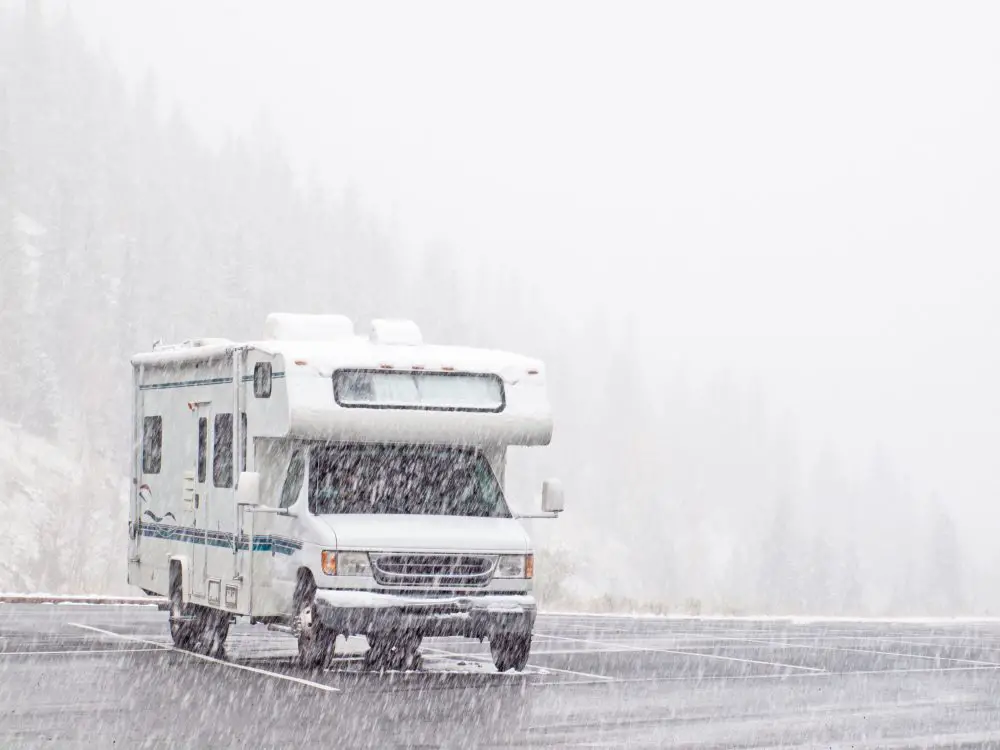
It is also important to consider the overall condition of your RV before setting out on a winter trip. Make sure to inspect the seals around all doors and windows for any signs of leakage or deterioration, as these can cause problems in colder temperatures. You should also ensure that your RV’s insulation is up to date, and check the battery and engine fluids regularly.
In addition, you will need to make sure that you have enough antifreeze in your RV to keep the water lines from freezing. The best way to do this is to buy antifreeze specifically designed for RVs, as it has a lower freezing point and will help protect your vehicle’s plumbing system.
Finally, you should be aware of the potential hazards associated with very cold weather conditions. Make sure you have access to a generator or other backup power supply in case of an emergency, and always be prepared for shutdowns due to blizzards or other extreme weather. Additionally, you should never camp in areas with high winds, since these can put too much strain on your RV’s frame and damage its exterior [1].
Insulate Your RV for Better Performance in Cold (And Warm) Weather
Insulating your RV is a great way to make sure that you can heat and cool your vehicle efficiently, no matter what the weather outside. It will also help with noise reduction, which can be important in more densely populated areas where people are living close together. There are several different types of insulation available for RVs; some types are designed for use in colder climates, while others are better suited for hot climates.
When choosing to insulate your RV, the main thing you need to consider is what type of insulation will work best for the climate in which you plan on using it. There are many types available including fiberglass, foam and reflective foil insulation. Each has its own advantages and disadvantages when compared to the other types.
Fiberglass is the most common type of insulation used in RVs and it works well for both hot and cold climates. It is relatively easy to install, but it can cause some allergic reactions if handled improperly. Foam insulation can be more effective than fiberglass in certain situations, but since it needs to be applied with a spray gun or foam board, it can be quite tricky to install. Reflective foil insulation is designed for maximum efficiency in extreme temperatures and can be a good option if your RV will primarily be used in hot climates.
To maximize the effectiveness of your insulation, you should also make sure that there are no gaps or air leaks around doors, windows and other areas. Sealing any cracks with caulk or expanding foam can help to keep the air inside of your RV from escaping and ensure that your insulation performs as effectively as possible. Additionally, you may want to invest in a thermostat-controlled fan system that will circulate the air within your RV and help to evenly distribute heat or coolness depending on the season.
Finally, it is important to check the insulation regularly and replace it when necessary. Over time, your RV’s insulation may become damaged or less effective due to wear and tear; replacing it every few years can help to ensure that your RV remains comfortable no matter what the temperature is outside.
Tips and Tricks for RVing When the Temperatures Drop
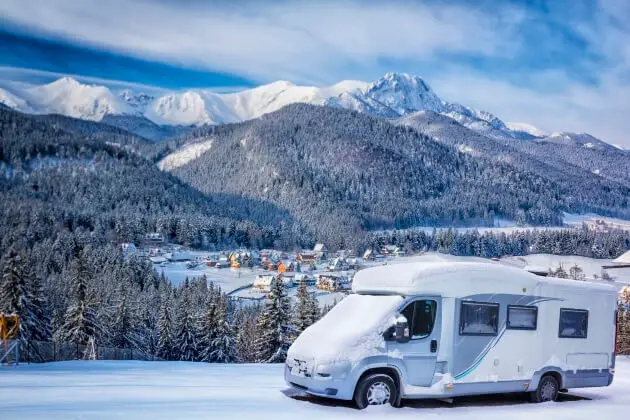
Leverage Multiple Forms of Heating
The best way to stay comfortable in an RV when it’s cold outside is to leverage multiple forms of heating. This could include using space heaters, portable electric radiators, or propane heaters. If you have the option, consider installing a furnace in your RV as this will provide the most reliable and consistent source of heat and can be operated even during power outages.
Ensure Adequate Insulation
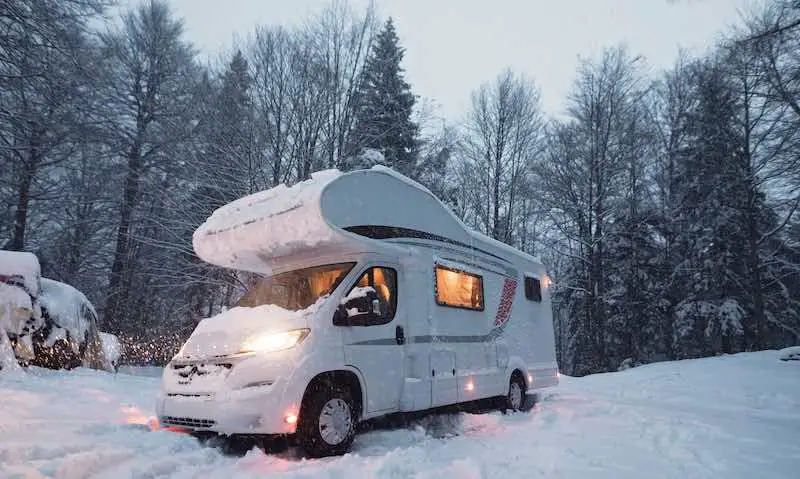
Keeping the cold out and the heat in is an important part of staying comfortable during a chilly winter RV trip. Start by ensuring that all of your windows and doors are airtight, and consider adding weather stripping where necessary. You may also want to consider investing in insulation materials such as foam board or bubble wrap to line your walls and windows. This will help keep the heat inside and make it easier to maintain a comfortable temperature in your RV.
You Can Never Have Too Many Layers
No matter how warm you keep your RV, it’s always a good idea to dress in multiple layers when you’re outside. This way, if it gets colder than expected, you can simply add on an extra layer or two to stay comfortable. It’s also important to wear appropriate footwear since cold weather can quickly chill your feet.
Put Together an Emergency Kit
No one ever plans on being stranded in their RV, but it’s best to be prepared just in case. Put together a winter emergency kit with items such as blankets, hats, gloves, and flashlights so that you can stay warm and safe if you find yourself stuck somewhere. It’s also a good idea to keep non-perishable snacks on hand in case of a power outage.
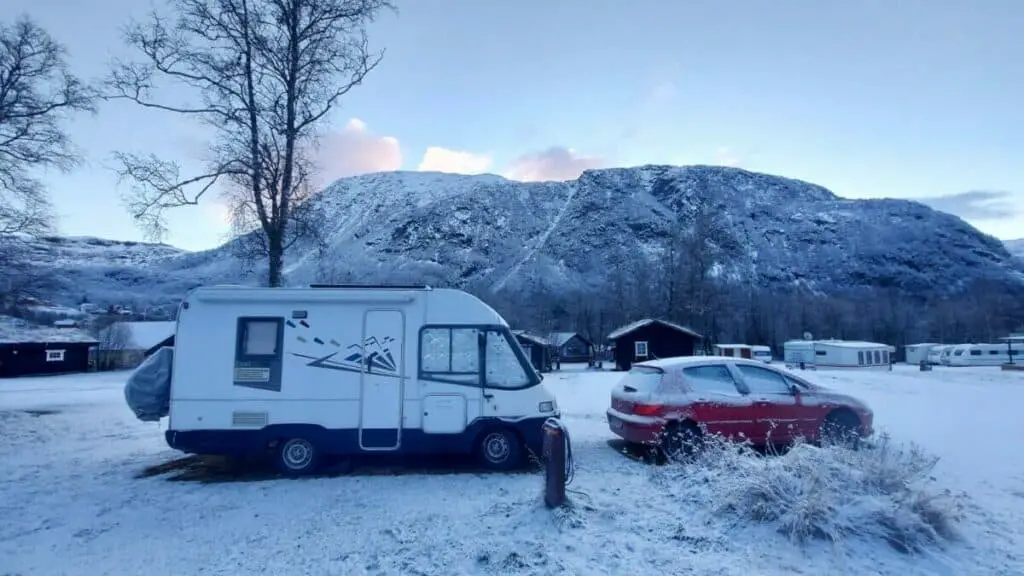
Run RV Specific Antifreeze Through Your Plumbing System
Your RV’s plumbing system can easily freeze and burst in cold weather, so it’s important to make sure you are running antifreeze through your lines. Running a mixture of specialized RV-specific antifreeze through all of the water lines will help ensure that everything remains working properly in freezing temperatures.
Check Your Batteries Regularly
The cold temperatures can put a strain on the batteries in your RV, so it’s important to monitor them and check their charge regularly. Ensure that you are using deep cycle batteries designed for RV use, and make sure they are kept warm when possible as this will help prevent them from losing charge too quickly.
Don’t Forget About Your Tow Vehicle
If you are towing an RV, don’t forget to winterize your tow vehicle as well. Make sure that your fluids are topped off and that you have a full tank of gas. Check your tires for proper inflation and make sure all the lights are in working order. Taking these steps will help ensure you get where you’re going safely no matter what the weather.
Protect Your RV’s Exterior
Make sure you are taking steps to protect your RV’s exterior from the cold weather. Consider investing in a quality cover to help insulate it and keep it warm. You may also want to consider adding awnings or other covers over outdoor windows and vents to prevent them from getting too cold [3].
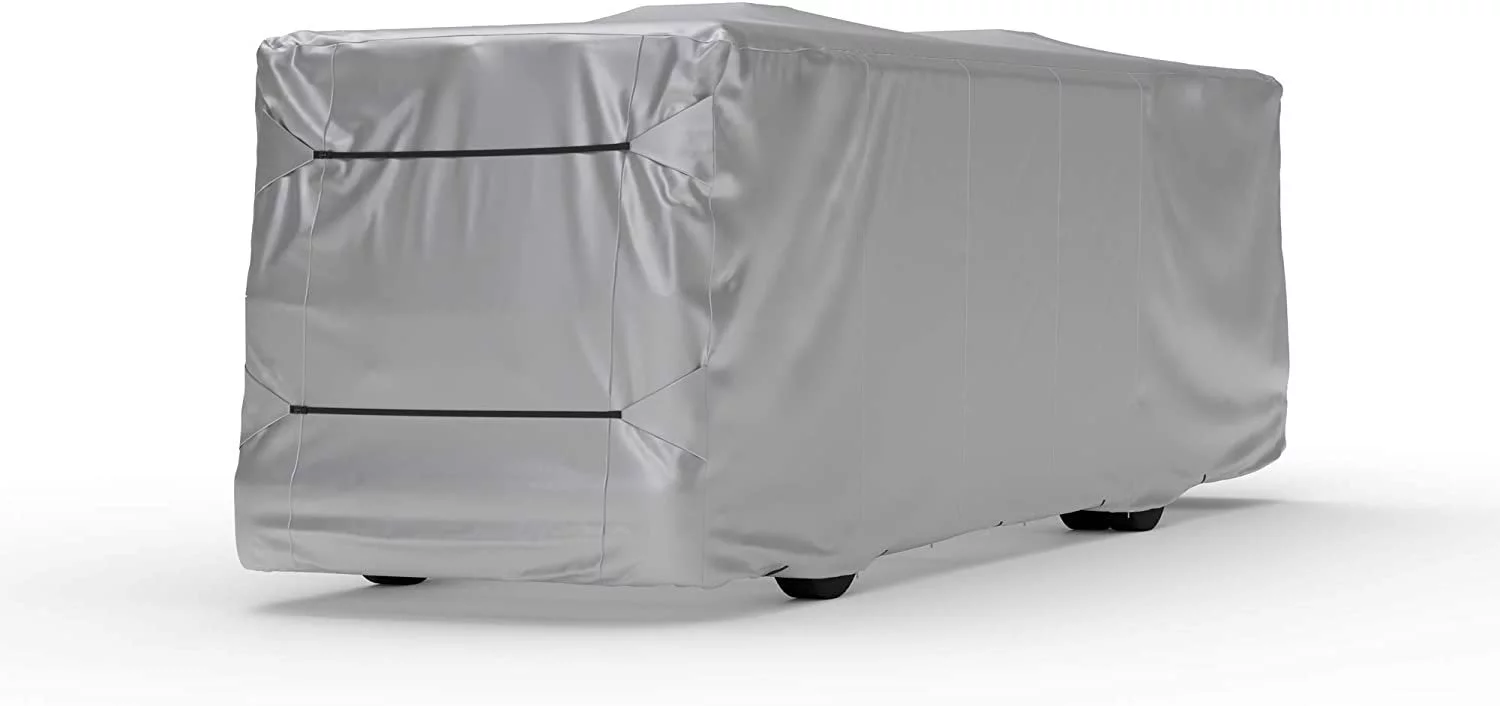
How Can You Prepare Yourself and Your RV for a Cold Weather Trip Properly?
One of the key steps in preparing your RV for a cold weather trip is to winterize it. This involves adding antifreeze to plumbing lines, emptying and storing fresh water tanks, adding sealant or insulation to windows and doors to block drafts, and sealing off any ventilation that could allow cold air into the interior. You can also invest in RV-specific winterizing products like heated hoses, space heaters, and other insulation accessories to keep your RV warm during cold weather.
Finally, make sure to prepare your vehicle for the cold weather as well. Have your battery checked by a professional before embarking on your trip; cold temperatures can cause batteries to lose power quickly. Check your tires for signs of wear and tear, and make sure to use winter-rated wiper blades as well. These precautions will ensure you stay safe on the road during cold weather conditions.
In addition to preparing your RV for a cold weather trip, it’s important to choose a camping destination that is suitable for wintertime activities. Many campgrounds in colder climates provide snowshoeing, cross-country skiing, and other winter activities so that you can enjoy the outdoors even when temperatures drop. With proper preparation and planning, you can ensure that your RV is ready for a safe and enjoyable cold-weather camping trip [4].
FAQ
How cold does it have to be for RV pipes to freeze?
The temperature required to freeze RV pipes depends on a variety of factors, such as the type of material used in the pipe, the presence or absence of insulation, and the presence or absence of heated water lines. Generally speaking, if temperatures drop below freezing (32°F/0°C), RV pipes can freeze regardless of these variables. To prevent frozen pipes, RV owners should always insulate and/or heat their pipes when temperatures are expected to drop below freezing. Additionally, it’s a good idea to keep the RV heated or plugged into shore power while in storage during cold weather.
How can I unthaw my RV’s frozen pipes?
The best way to unthaw frozen RV pipes is to use a safe, low-voltage heating device. This could be in the form of an electric heat tape or a heated pipe sleeve, which can be wrapped around the affected area and plugged into a power source. If this isn’t available, you can also try to thaw the ice blockage with hot water bottles or towels soaked in hot water and wrapped around the pipes. This method requires more patience, however, as it can take several hours for the ice to melt. If neither of these methods works, you may need to replace the frozen pipe or contact a qualified RV technician for assistance.
What can I do to prevent my RV’s pipes from freezing?
The best way to prevent your RV’s pipes from freezing is to make sure they are properly insulated and, if possible, heated. This can be done by using insulation foam tubing or fiberglass pipe wrap to insulate the pipes, as well as electric heat tape or heated pipe sleeves to provide additional warmth. Additionally, it’s important to keep the RV heated or plugged into shore power while in storage during cold weather. Finally, if temperatures are expected to drop below freezing, you should drain all water lines and tanks before storing your RV for the winter months. By following these steps, you can ensure that your RV’s pipes remain safe from freezing temperatures.
What is the best way to store my RV during cold weather?
The best way to store your RV during cold weather is to make sure it is properly insulated and/or heated, as this will prevent the pipes from freezing. Additionally, you should plug the RV into shore power or keep it heated at all times while in storage. Finally, if temperatures are expected to drop below freezing, you should drain all water lines and tanks before storing your RV for the winter months. By following these precautions, you can ensure that your RV remains safe and comfortable during cold weather.
What type of pipe is typically used in RVs?
The most common types of pipes used in RVs are PVC (polyvinyl chloride) or PEX (cross-linked polyethylene). PVC is more resistant to freezing temperatures, but PEX tends to be easier and less expensive to install. Additionally, both materials are considered safe for drinking water applications, so either one is suitable for RV plumbing. Ultimately, the best type of pipe for an RV depends on the specific needs of the user and should be discussed with a qualified RV technician before making a purchase.
What is too cold for winter camping?
Winter camping can be a fun and rewarding experience, but it is important to make sure that temperatures won’t drop too low for safety. Generally speaking, temperatures below 0°F/-18°C are considered too cold for winter camping. At these temperatures, the risks associated with frostbite and hypothermia become more serious. Additionally, RV pipes may freeze at these temperatures. For these reasons, it is important to ensure that temperatures don’t drop this low before embarking on a winter camping trip in an RV.
What is the best way to insulate my RV’s pipes?
The best way to insulate your RV’s pipes is to use insulation foam tubing or fiberglass pipe wrap. This material can be found in most hardware stores and is designed to protect pipes from freezing temperatures. Additionally, you may want to consider using an electric heat tape or a heated pipe sleeve for additional warmth. These items can also be purchased at most hardware stores and should be wrapped around the affected area before plugging into a power source.
How can I keep my RV warm in cold weather?
The best way to keep your RV warm in cold weather is to make sure it is adequately insulated and/or heated. This can be done by using insulation foam tubing or fiberglass pipe wrap to insulate the pipes, as well as electric heat tape or heated pipe sleeves to provide additional warmth. Additionally, it’s important to keep the RV plugged into shore power or heated while in storage during cold weather. Finally, if temperatures are expected to drop below freezing, you should drain all water lines and tanks before storing your RV for the winter months.
Useful Video: Three Cold Weather RVing Tips
Conclusion Paragraph
RV traveling in cold and windy weather, especially in winter can be challenging. But with the right preparations, it can be done safely and successfully. Knowing which RV heating systems to use is key to staying comfortable while traveling in cold weather. It is also important to plan with extra fuel, warm clothing, and appropriate tires for winter driving conditions before taking on a cold-weather RV trip. With proper planning and preparation, travelers can enjoy the beauty of winter camping and RV travel without sacrificing their safety.
References:
- https://www.ultraheat.com/post/rv-safety-when-is-it-too-cold-to-take-an-rv-trip
- https://koa.com/blog/rv-insulation-guide-tips-for-staying-cool-in-your-rv-this-summer/
- https://www.outdoorsy.com/blog/winter-rv-camping-guide
- https://www.nerdwallet.com/article/travel/tips-for-winter-rv-road-trips

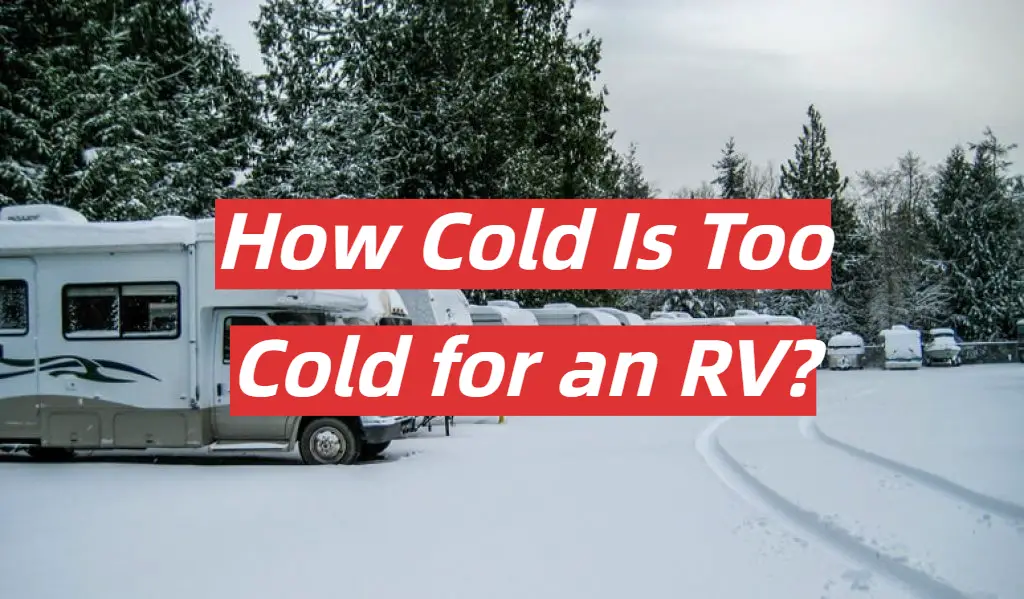




Leave a Reply